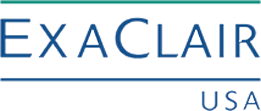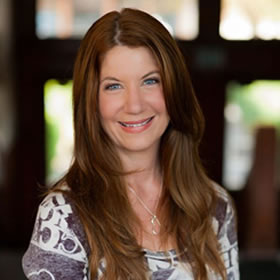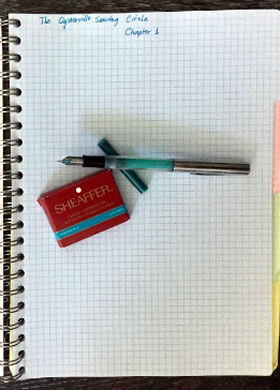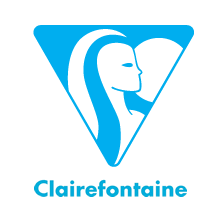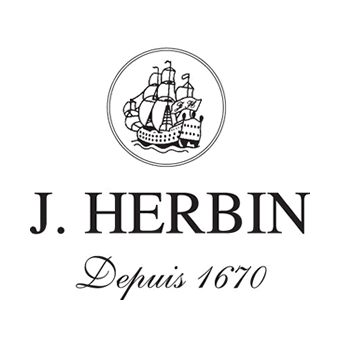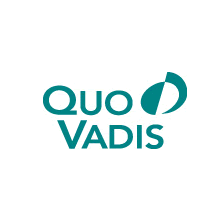The Writer's Project
About the Project:
Exaclair is honored to feature authors from around the world who are willing to share the secrets of their success; including tips and techniques for aspiring writers, and a behind-the-scenes look at their life and latest work.
Featured Writer: Susan Wiggs
"Each one of my 50+ books started out in a Clairefontaine."
Susan Wiggs is a best selling author of historical and contemporary romance novels. In "Passing Through Paradise" she created a heroine who uses Clairefontaine notebooks and peacock blue ink. This is no surprise, since the author herself always writes her first drafts with a special fountain pen, peacock blue ink, and Clairefontaine notebooks with graph pages.
Susan's website:
www.susanwiggs.com
Please tell us about yourself. Where are you from, and where do you live now?
Oh, I'm so boring--that's why I write fiction! But thank you for asking. I was born in upstate New York, where the beautiful Lakeshore Chronicles series takes place. My growing-up years were spent in Brussels and Paris--we lived there thanks to my dad's work. I've always loved the process of writing--the craft of it--and the wonderful librairies and papeteries in France were a treasure trove of gorgeous, rich paper and ink. I was, and still am, in love with Clairefontaine grid-ruled cahiers. There's something delicious about them, something that invites me to express myself on paper. As an adult, I chose the glorious Pacific Northwest for my home, because I'm smitten by both mountains and the sea. So I live on an island near Seattle, in full view of majestic Mount Rainier. It's a view I never take for granted. Here's what I wake up to in the morning (when the weather is clear). You can see more eye candy on the web site of our guest house: www.pointwhiteguesthouse.com.
I understand you came to writing at a young age, then left it for awhile and came back to it later. Can you tell us why you stopped writing, and what brought you back to it?
No, I never left writing. I don't think there was ever a time I wasn't writing stories. But as any writer will tell you, no one pays you to be an aspiring writer! So you need either a paying job--or a patron of the arts. I became a teacher, a career I loved, and worked on my writing in the evenings and holidays.
What is your writing inspiration? Where do you get your ideas for your books?
My inspiration comes from everywhere--the people I love, strangers I meet, books I read, music, photographs, and most especially the places I travel. My books take place in settings I love to visit--Provence, remote beaches,, Sonoma, a lake in the Catskills, snowy Vermont, sunwarmed Texas, a zinc bar in Paris...beautiful places never fail to fill me with wonder. As a reader, I've always loved books that take me to magical places. As a writer, I try to pull the reader along on that journey. My new novel, Map of the Heart, starts off on the remote and somewhat mystical Delmarva Peninsula, between the Chesapeake Bay and the raging Atlantic. Camille, the main character, takes the reader on a quest similar to the one my husband, Jerry, and I pursued as I was researching the book. We went on a winding drive through the south of France, looking for places from the past where one of the most dramatic campaigns of WWII took place. I posted some wonderful pictures of the research trip here.
We are thrilled that you write in Clairefontaine notebooks! Tell us about your writing process and why you choose to write in a paper notebook.
My first Clairefontaine notebooks came from a tiny corner shop in Alsemberg, Belgium, near my house. I filled the books with photographs, teenaged musings, incredibly bad poetry, secrets, and dreams. Ever since, the smooth pages of the high-quality paper seem to be a trigger for creativity. Like so many other creative pursuits, habit is part of the process. I've written about this a time or two on my blog.
The other hard truth that a writer faces in this day and age is that technology is a distraction as well as a convenience. So the paper-and-pen aspect of writing in longhand is a great remedy for that. No one is tweeting at me, inviting me to "like" them, offering me discount codes, or tempting me to stray into baby elephant videos. All of those have their place, but not when you're composing an original story.
Writing in a notebook takes away all those distractions!
Do you have any particular writing routines, such as a time of day or place where you prefer to write?
Writing is my job, so I'm at it 40-80 hours per week. I generally start early, and I try to get my new material composed before I get distracted by e-mail or the news or the phone. Because a notebook is so portable, I can write anywhere--in a waiting room, in the car, while traveling...but my favorite spots are around the house. On the patio when the weather is nice, or snuggled up by a cozy fire during the stormy season. I'm not fond of sitting at a desk. Give me a cushy chair and something nice to sip on, and I'm in heaven!
What are you working on now?
I just started a new novel, with the working title The Oysterville Sewing Club. I mean JUST STARTED:
I'm excited to write this one, because the main character designs apparel, which means my research source for this one will be my husband. I'm so proud of J-Stitch, his line of kids' adventure wear.
He's also way cooler than I am.
What do you like to do when you are not writing?
Well, I hang out with my husband, of course. The dedication page of Map of the Heart will tell you why.
I love to travel, and my most exciting upcoming trip is open to readers and writers. If you'd like to join me and mystery author Elizabeth George for the ultimate reading and writing retreat AT SEA next year, you should check this out.
I love skiing, cycling, and hiking. I take care of my dear old mom, I play with my little granddaughter, and read myself to sleep every night. My family and friends keep me grounded and inspired. And the right office supplies keep my creativity well fed!
